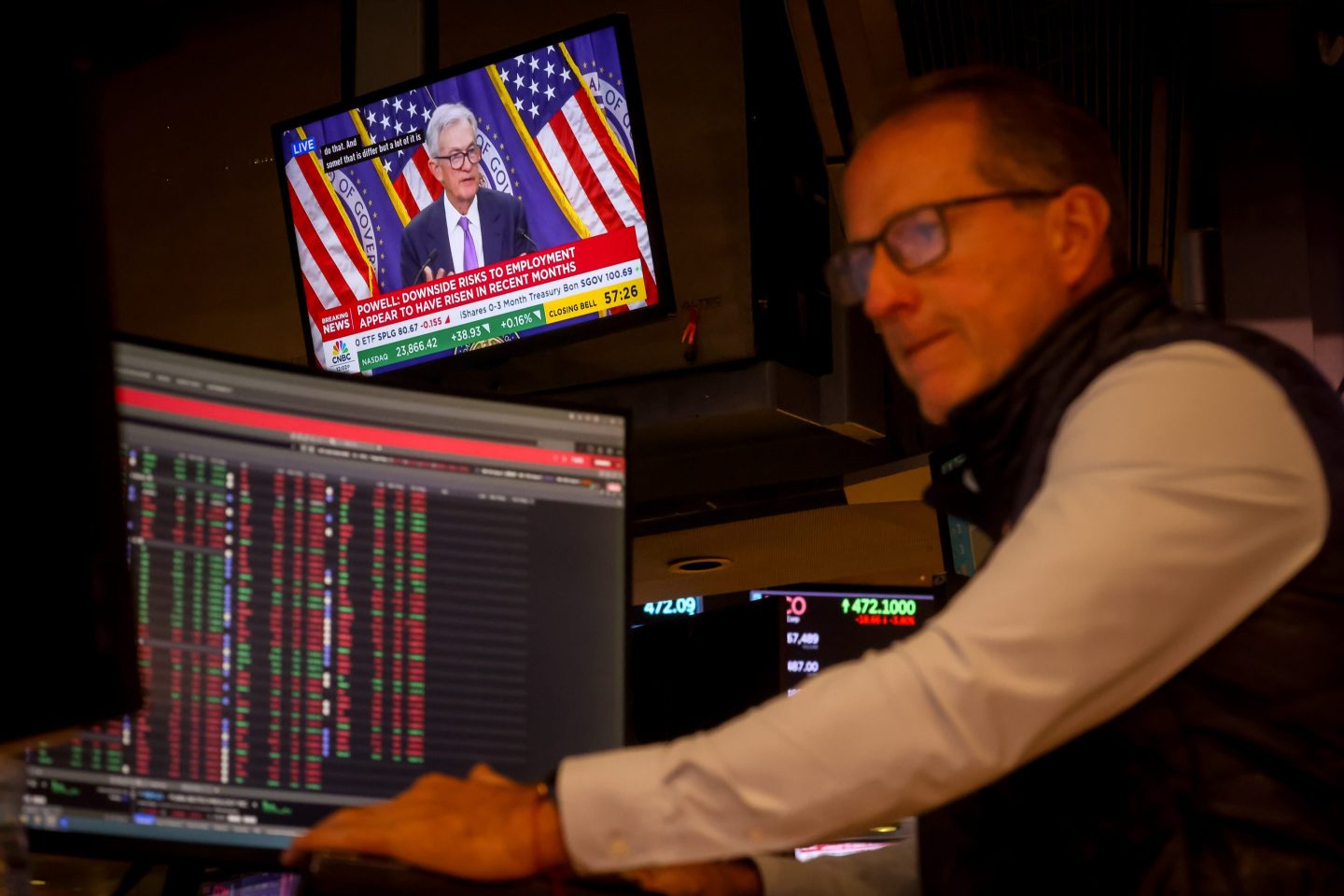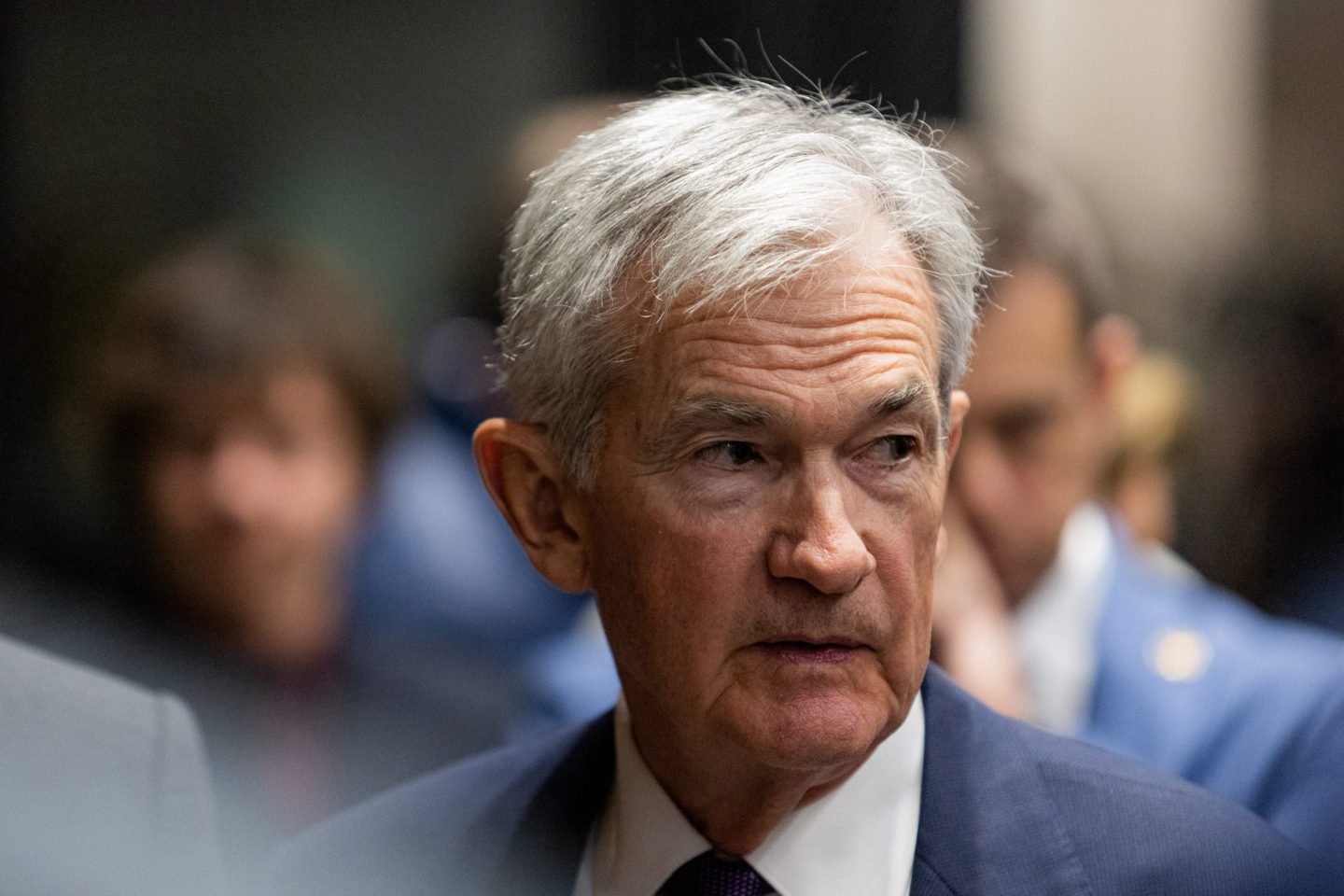As markets head towards Black Friday, the mood among investors echoes the gloom from which the shopping holiday derives its namesake. Markets across Europe, the U.S. and Asia have all hit snags this week, and the VIX volatility index also soaring.
The negative sentiment isn’t particularly down to one fact or another, said Macquarie’s Thierry Wizman in a note to clients this week. Rather, it’s a “deadly confluence” of bad news—or rather, news that investors would rather not see.
The first is America’s base interest rate. Throughout 2025, investors had steadily convinced themselves that cuts would come later in the year, with a reduction in December all but priced in. However, the tone from Federal Open Market Committee (FOMC) members recently turned hawkish, particularly given a lack of federal data during the government shutdown.
Per CME’s FedWatch barometer, the likelihood of a December cut has fallen from 94% a month ago to 47% at the time of writing, as the market sways toward concluding rates will be kept on hold at the current level. This will have ramifications of its own: Consumers won’t get a final burst of relief in the run-up to the Christmas shopping period, and businesses won’t get the cheaper borrowing costs to motivate them to start new investing. There’s also the minor fact that a hold will likely infuriate the White House, potentially reigniting tensions over the Fed’s independence.
Also on the list of “wrong-way news,” Wizman wrote, are: “Second, there’s been widening evidence of slowing growth in key economies—the U.K., E.U., China, and Japan. Third, there’s been uncertainty ahead of key fiscal policy decisions and plans (e.g., Japan, U.K.), as well as some associated political turmoil abroad (e.g., France, U.K.).”
Concerns about the U.K. economy’s trajectory are on the rise, with the nation posting only fractional growth in the third quarter of the year. Likewise, questions are ramping up for Chancellor Rachel Reeves about her upcoming budget plan and how it will handle tackling rising deficits with policies that don’t alienate businesses or consumers.
France is facing similar questions about its government deficit, while in Japan, uncertainty stems from the upcoming fiscal announcement by Prime Minister Sanae Takaichi. Takaichi is hearing calls for a larger budgetary package to support growth after the country’s GDP contracted by 1.8% in the most recent reported period.
Thus far, uncertainty among allies hasn’t given the U.S. dollar the boost it can usually expect. Wizman adds: “The USD has only been a small beneficiary of these adverse trends, and only in the past two days has it managed to start to be a ‘safe haven’ again, even besting the CHF [the Swiss franc] and JPY [Japanese yen], which are both weaker today.”
Bad news may keep coming
It may take further bad news for the Fed to change its tune, Wizman adds: “While these adverse narratives floating mainly outside the US for now, it’s hard to conceive of a renewal in the weakness of the USD between now and year-end, unless a sharper drop in US stocks causes the Fed to about-face again and sound ‘dovish’.”
There are also plenty of data releases to come which could further alarm investors—not least a much-anticipated jobs report coming tomorrow.
This too, economists have warned, may feed into the bad news narrative at play. As RSM chief economist Joe Brusuelas wrote in a note shared with Fortune yesterday, his expectation is for a 50,000 increase in the September report. While positive on the surface, Brusuelas adds: “The internals of the report will illustrate diminished demand for labor in higher-paying industries as the economy struggles to produce the 50K necessary to keep American labor conditions stable.”
He also anticipates upward revisions to both the July and August jobs estimates, increasing employment to near 100,000 roles in the report—which should be good news, right?
Not so fast. He adds: “Should the September estimate show solid upward revisions it would likely further dampen expectations of any prospective rate cut at the Fed December policy meeting.”
Here’s a snapshot of the global markets prior to the opening bell in New York:
- S&P 500 futures are up 0.41% this morning. The last session closed down 0.83%.
- STOXX Europe 600 was up 0.14% in early trading.
- The U.K.’s FTSE 100 was flat in early trading.
- Japan’s Nikkei 225 was down 0.34%.
- China’s CSI 300 was up 0.44%.
- The South Korea KOSPI was down 0.61%.
- India’s NIFTY 50 is up 0.55%.
- Bitcoin was up at $95K.












